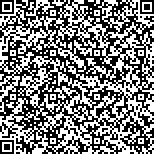| 引用本文: | 李航,王晓锋,袁兴中,王继龙,李贤祥,周婷.淡水生态系统温室气体通量监测方法综述.湖泊科学,2023,35(4):1153-1172. DOI:10.18307/2023.0402 |
| Li Hang,Wang Xiaofeng,Yuan Xingzhong,Wang Jilong,Li Xianxiang,Zhou Ting.Review on monitoring methods for greenhouse gases fluxes in freshwater ecosystems. J. Lake Sci.2023,35(4):1153-1172. DOI:10.18307/2023.0402 |
|
| |
|
|
| 本文已被:浏览 4169次 下载 4046次 |

码上扫一扫! |
|
|
| 淡水生态系统温室气体通量监测方法综述 |
|
李航1,2, 王晓锋1,3,2, 袁兴中1,3,4, 王继龙1,2,5, 李贤祥1,2, 周婷1,2
|
|
1.重庆师范大学, 长江上游湿地科学研究重庆市重点实验室, 重庆 401331;2.重庆师范大学地理与旅游学院, 重庆 401331;3.重庆师范大学, 三峡库区地表生态过程野外科学观测研究站, 重庆 405400;4.重庆大学建筑城规学院, 重庆 400030;5.天津大学地球系统科学学院, 天津 300072
|
|
| 摘要: |
| 淡水系统是全球温室气体排放清单中最具不确定性的组成部分。淡水生态系统温室气体通量监测的方法多种多样,不同方法之间观测结果存在偏差,在一定程度上限制了全球或区域间的相互比较,是造成目前全球估算不确定性的重要原因。然而,目前关于淡水系统温室气体排放通量监测方法的系统梳理、比较及影响因素分析等鲜见报道。本研究在总结淡水系统温室气体排放特征的基础上,整理当前主要监测方法(箱法、边界层模型法、微气象法、倒置漏斗法)的基本原理、通用模型与算法、适用条件以及优缺点等,评价不同方法在实际应用中的适应性;进一步分析不同方法观测偏差的主要影响因素,提出当前箱法与边界层模型法存在方案众多、缺乏统一规范等问题,为研究方法的优化提供科学支撑;同时,综述了不同方法的对比研究,大部分研究发现箱法估算结果高于边界层模型法,而微气象法与箱法、边界层模型法观测的结果的一致性仍存在争议;最后,本研究提出未来应重点关注淡水系统温室气体通量监测方法的偏差来源及潜在影响,建议开展更多相关的方法学研究,进一步优化相关的估算模型及参数,研发具有普适性的监测规范,为提高监测结果的精度提供支撑。 |
| 关键词: 淡水水体 温室气体排放 监测方法 影响因素 研究进展 |
| DOI:10.18307/2023.0402 |
| 分类号: |
| 基金项目:重庆市自然科学基金项目(2022NSCQ-MSX2598)和重庆市教委科学技术研究项目(KJQN202200536,KJZD-K202000502)联合资助。 |
|
| Review on monitoring methods for greenhouse gases fluxes in freshwater ecosystems |
|
Li Hang1,2, Wang Xiaofeng1,3,2, Yuan Xingzhong1,3,4, Wang Jilong1,2,5, Li Xianxiang1,2, Zhou Ting1,2
|
|
1.Chongqing Key Laboratory of Wetland Science Research of the Upper Reaches of the Yangtze River, Chongqing Normal University, Chongqing 401331, P. R. China;2.School of Geography and Tourism, Chongqing Normal University, Chongqing 401331, P. R. China;3.Three Gorges Reservoir Area Earth Surface Ecological Processes of Chongqing Observation and Research Station, Chongqing Normal University, Chongqing 405400, P. R. China;4.Faculty of Architecture and Urban Planning, Chongqing University, Chongqing 400030, P. R. China;5.School of Earth System Science, Tianjin University, Tianjin 300072, P. R. China
|
| Abstract: |
| Freshwater ecosystems, as active components in global biogeochemical cycles, are known to be important sources of atmospheric greenhouse gases (GHGs). The quantification of GHGs budget from freshwaters has been subject to intensive research in recent years, while current assessments still exist enormous uncertainties due to their strong spatial and temporal heterogeneity. Particularly, uncertainties relating to methodology of monitoring GHGs fluxes in freshwater ecosystems might further constraint the accurate assessment for total contributions of freshwater ecosystems to global GHGs inventory. Previous reports used different methods for GHGs fluxes measurement can also strongly restrict the comparisons between global or regional freshwater ecosystem fluxes. However, previous studies have rarely focused on the systematic summarization of theory, algorithm and influencing factors of different monitoring methods for GHGs fluxes in freshwaters. This study summarized the general characteristics of GHGs emissions from freshwater ecosystems, and then sketched the basic theory, general algorithms and models of different GHGs fluxes monitoring methods, including floating chamber method, boundary layer model based method, micrometeorology method, and bubble traps method, which have been commonly used in freshwater ecosystems. We further analyzed the application environment and advantages and disadvantages of each method, respectively. Meanwhile, the main influencing factors being related to observation accuracy of floating chamber method and boundary layer model-based method were reviewed in detail. We highlighted that there were many inconsistent programs of chamber size, installation, sampling interval for floating chamber method, would influence the monitoring results. Uniform criterion and standard for floating chamber method and boundary layer model-based method should been developed in different aquatic environment. Furthermore, the comparative studies of the different monitoring methods were integrated. The results showed generally overestimated GHGs fluxes using the floating chamber methods compared with those deriving from the boundary layer model-based method. Moreover, the consistency between the observations using micrometeorological method and floating chamber method were still controversial. Our study suggests that the effect of the monitoring methods on the GHGs fluxes in freshwaters and their deviation source is an important challenge. Comprehensive assessment and comparison of various methods can improve the accuracy of GHGs measurement in freshwater ecosystems. Methodology of GHG fluxes measurement should be given priority attention in the further studies. |
| Key words: Freshwater greenhouse gas fluxes monitoring methods influencing factors research progress |
|
|
附件
|
|